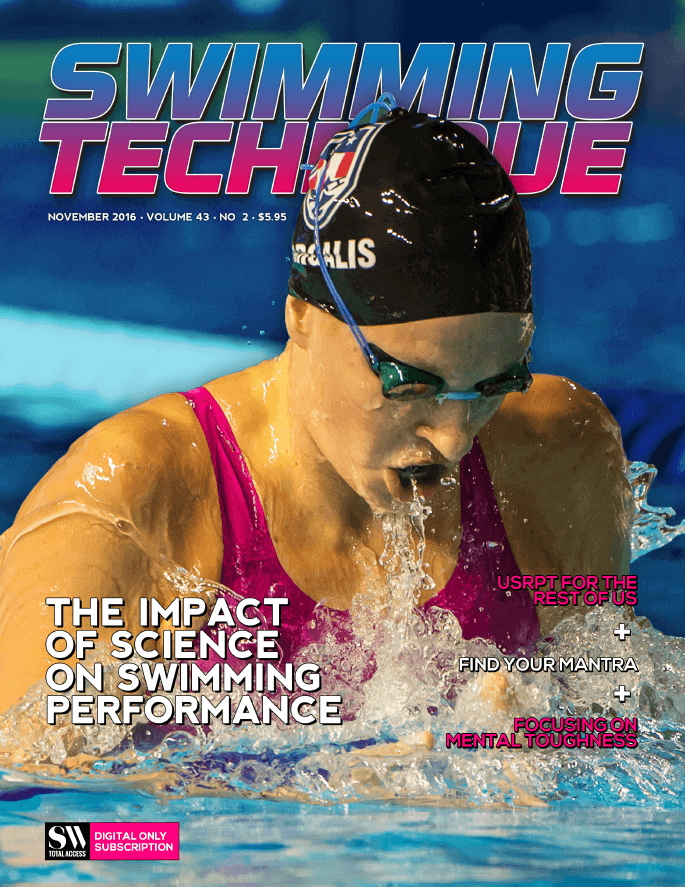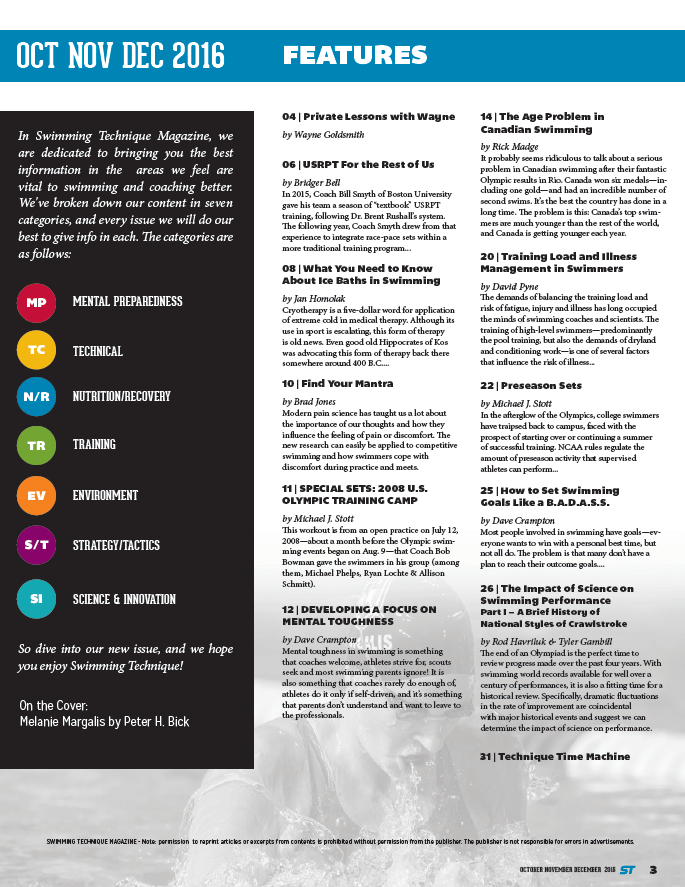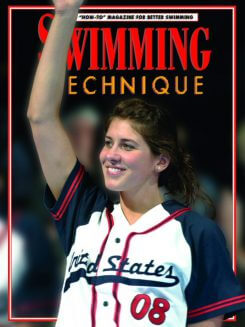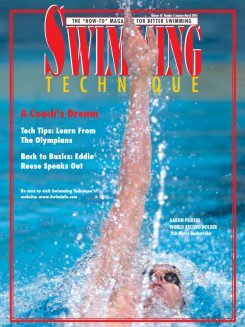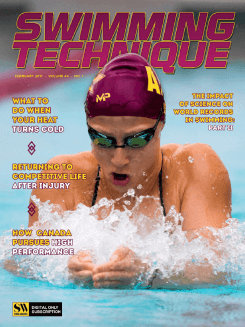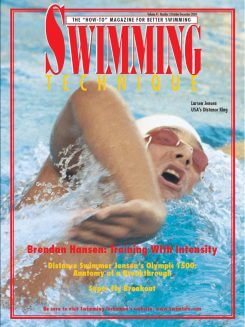Description
Swimming Technique November 2016 Issue
IN THIS ISSUE:
04 PRIVATE LESSONS WITH WAYNE
by Wayne Goldsmith
06 USRPT FOR THE REST OF US
by Bridger Bell
In 2015, Coach Bill Smyth of Boston University gave his team a season of “textbook” USRPT training, following Dr. Brent Rushall’s system. The following year, Coach Smyth drew from that experience to integrate race-pace sets within a more traditional training program.
08 WHAT YOU NEED TO KNOW ABOUT ICE BATHS IN SWIMMING
by Jan Homolak
Cryotherapy is a five-dollar word for application of extreme cold in medical therapy. Although its use in sport is escalating, this form of therapy is old news. Even good old Hippocrates of Kos was advocating this form of therapy back there somewhere around 400 B.C.
010 FIND YOUR MANTRA
by Brad Jones
Modern pain science has taught us a lot about the importance of our thoughts and how they influence the feeling of pain or discomfort. The new research can easily be applied to competitive swimming and how swimmers cope with discomfort during practice and meets.
011 SPECIAL SETS: 2008 U.S. OLYMPIC TRAINING CAMP
by Michael J. Stott
This workout is from an open practice on July 12, 2008–about a month before the Olympic swimming events began on Aug. 9–that Coach Bob Bowman gave the swimmers in his group (among them, Michael Phelps, Ryan Lochte & Allison Schmitt).
012 DEVELOPING A FOCUS ON MENTAL TOUGHNESS
by Dave Crampton
Mental toughness in swimming is something that coaches welcome, athletes strive for, scouts seek and most swimming parents ignore! It is also something that coaches rarely do enough of, athletes do it only if self-driven, and it’s something that parents don’t understand and want to leave to the professionals.
14 THE AGE PROBLEM IN CANADIAN SWIMMING
by Rick Madge
It probably seems ridiculous to talk about a serious problem in Canadian swimming after their fantastic Olympic results in Rio. Canada won six medals–including one gold–and had an incredible number of escond swims. It’s the best the country has done in a long time. The problem is this: Canada’s top swimmers are much younger than the rest of the world, and Canada is getting younger each year.
20 TRAINING LOAD AND ILLNESS MANAGEMENT IN SWIMMERS
by David Pyne
The demands of balancing the training load and risk of fatigue, injury and illness has long occupied the minds of swimming coaches and scientists. The training of high-level swimmers–predominantly the pool training, but also the demands of dryland and conditioning work–is one of several factors that influence the risk of illness…
22 PRESEASON SETS
by Michael J. Stott
In the afterglow of the Olympics, college swimmers have traipsed back to campus, faced with the prospect of starting over or continuing a summer of successful training. NCAA rules regulate the amount of preseason activity that supervised athletes can perform.
25 HOW TO SET SWIMMING GOALS LIKE A B.A.D.A.S.S.
by Dave Crampton
Most people involved in swimming have goals–everyone wants to win with a personal best time, but not all do. The problem is that many don’t have a plan to reach their outcome goals…
26 THE IMPACT OF SCIENCE ON SWIMMING PERFORMANCE PART I–A BRIEF HISTORY OF NATIONAL STYLES OF CRAWLSTROKE
by Rod Havriluk & Tyler Gambill
The end of an Olympiad is the perfect time to review progress made over the past four years. With swimming world records available for well over a century of performances, it is also a fitting time for a historical review. Specifically, dramatic fluctuations in the rate of improvement are coincidental with major historical events and suggest we can determine the impact of science on performance.




